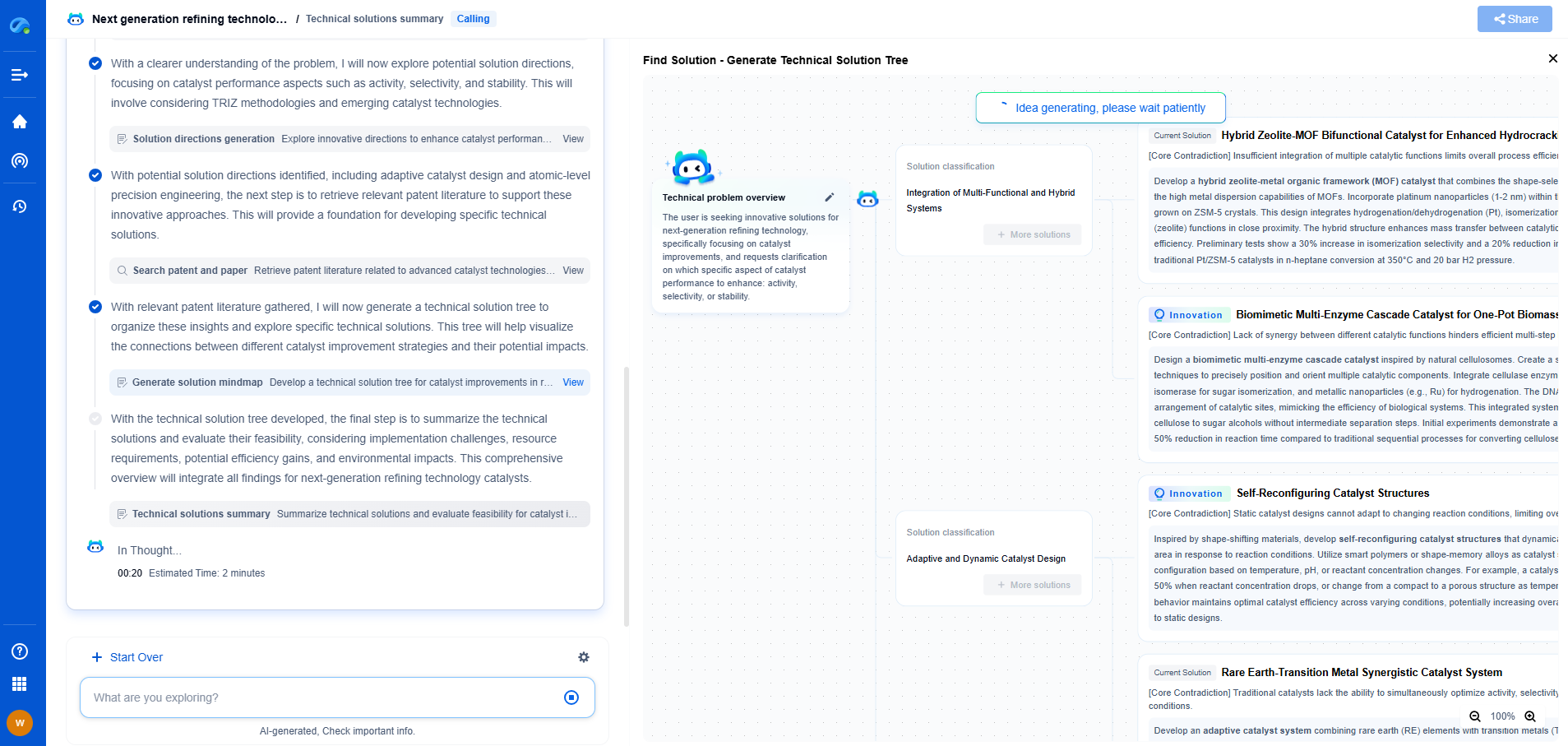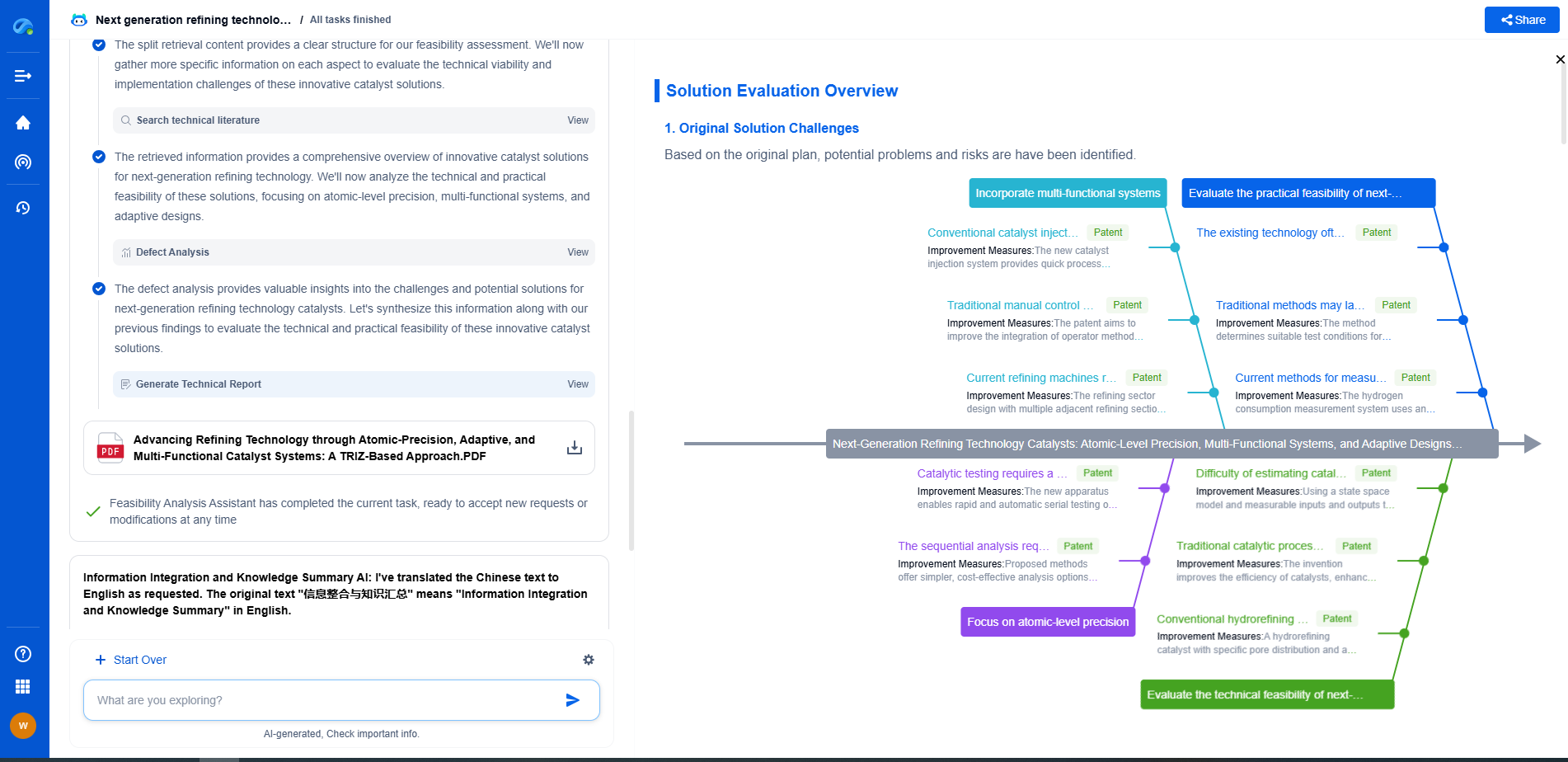Li-Fi (Light Fidelity): Can It Replace Wi-Fi?
JUN 27, 2025 |
In the ever-evolving world of technology, connectivity has become a cornerstone of modern life. Wi-Fi, a technology that utilizes radio waves to provide wireless internet access, has dominated the scene for decades. However, a new contender, Li-Fi, short for Light Fidelity, is emerging as a potential game-changer in the realm of wireless communication. But can Li-Fi truly replace Wi-Fi? To answer this question, we must delve into the intricacies of Li-Fi technology, its advantages, limitations, and potential applications.
**Understanding Li-Fi: How It Works**
Li-Fi is a wireless communication technology that uses light to transmit data. Unlike Wi-Fi, which relies on radio waves, Li-Fi utilizes the visible, ultraviolet, and infrared spectrums. The basic principle of Li-Fi is quite simple: data is encoded into light signals emitted by LED bulbs. These signals are then received by photodetectors, which decode the information back into electronic form.
One of the main advantages of Li-Fi is its ability to offer incredibly high data transfer rates. The visible light spectrum is much larger than the radio frequency spectrum, providing more bandwidth and enabling faster data transmission. Under optimal conditions, Li-Fi can achieve speeds up to 100 times faster than traditional Wi-Fi.
**Advantages of Li-Fi Over Wi-Fi**
1. **Increased Bandwidth**: The vast bandwidth available in the visible light spectrum allows for a significant increase in data transfer rates. This increased bandwidth means that Li-Fi has the potential to handle more users and more data simultaneously without the congestion issues often associated with Wi-Fi.
2. **Enhanced Security**: Since light cannot penetrate walls, Li-Fi offers a level of security that Wi-Fi cannot match. Data transmitted via Li-Fi is confined to the physical space illuminated by the light source, making it nearly impossible for outsiders to intercept the signal.
3. **Reduced Interference**: Li-Fi experiences less interference from other wireless communications, as it operates on a different spectrum than radio waves. This makes it an attractive option for environments with high RF interference, such as hospitals or airplanes.
**Limitations and Challenges**
Despite its promising advantages, Li-Fi is not without its limitations. The reliance on light means that Li-Fi signals can be easily obstructed by physical objects, such as walls or furniture, which limits its range and coverage. This characteristic necessitates strategic placement of light sources to ensure consistent connectivity.
Another challenge is the necessity for line-of-sight communication. Since Li-Fi requires a direct path between the transmitter and receiver, any blockages can disrupt the signal. This presents a challenge for widespread adoption, particularly in environments with numerous obstacles.
**Potential Applications of Li-Fi**
Li-Fi's unique properties make it well-suited for specific applications. In environments where radio frequencies pose health risks or interference issues, such as hospitals and aircraft, Li-Fi can provide a viable alternative for secure and stable communication. Additionally, Li-Fi can be used in places where RF penetration is undesirable, such as underwater communication or secure data transmission in military environments.
**The Future of Wireless Communication**
While Li-Fi offers remarkable potential, it is unlikely to completely replace Wi-Fi in the immediate future. Instead, it is more plausible that both technologies will coexist, each serving different purposes and complementing one another. As Li-Fi technology continues to evolve and overcome its current limitations, it may find its niche in specialized applications that require high security and minimal interference.
In conclusion, Li-Fi is an exciting development in the field of wireless communication, bringing with it the promise of faster speeds, enhanced security, and reduced interference. However, its inherent limitations mean it is not yet ready to unseat Wi-Fi as the dominant form of wireless connectivity. Instead, the future may lie in a hybrid approach, where both Li-Fi and Wi-Fi work together to meet the diverse needs of our increasingly connected world.
Accelerate Electronic Circuit Innovation with AI-Powered Insights from Patsnap Eureka
The world of electronic circuits is evolving faster than ever—from high-speed analog signal processing to digital modulation systems, PLLs, oscillators, and cutting-edge power management ICs. For R&D engineers, IP professionals, and strategic decision-makers in this space, staying ahead of the curve means navigating a massive and rapidly growing landscape of patents, technical literature, and competitor moves.
Patsnap Eureka, our intelligent AI assistant built for R&D professionals in high-tech sectors, empowers you with real-time expert-level analysis, technology roadmap exploration, and strategic mapping of core patents—all within a seamless, user-friendly interface.
🚀 Experience the next level of innovation intelligence. Try Patsnap Eureka today and discover how AI can power your breakthroughs in electronic circuit design and strategy. Book a free trial or schedule a personalized demo now.
- R&D
- Intellectual Property
- Life Sciences
- Materials
- Tech Scout
- Unparalleled Data Quality
- Higher Quality Content
- 60% Fewer Hallucinations
Browse by: Latest US Patents, China's latest patents, Technical Efficacy Thesaurus, Application Domain, Technology Topic, Popular Technical Reports.
© 2025 PatSnap. All rights reserved.Legal|Privacy policy|Modern Slavery Act Transparency Statement|Sitemap|About US| Contact US: help@patsnap.com

